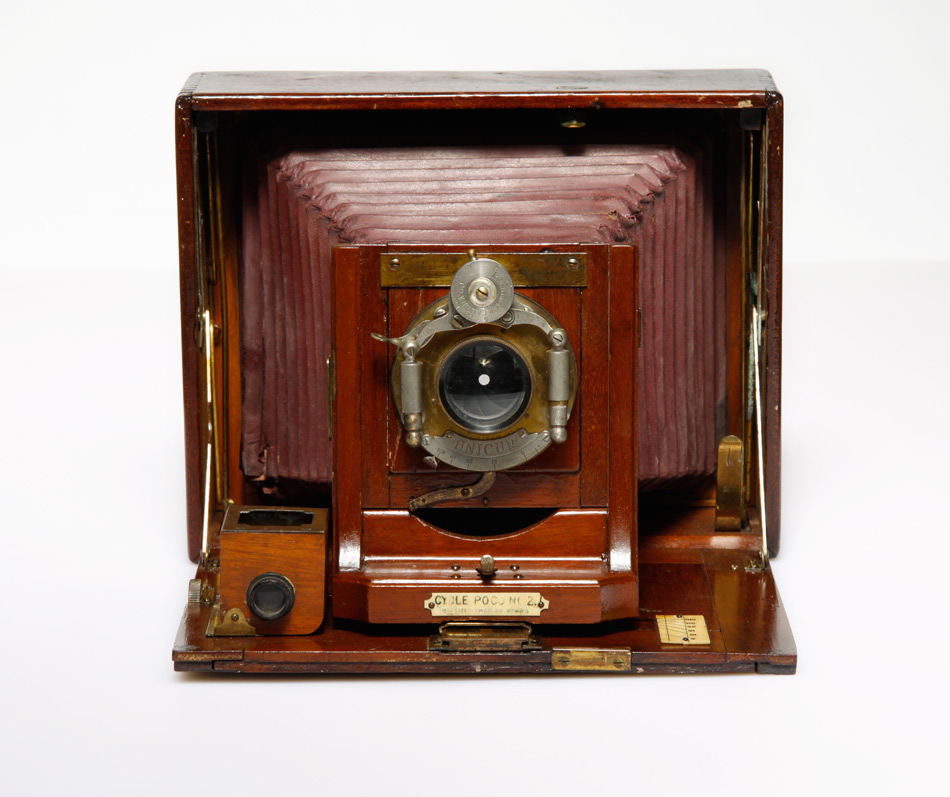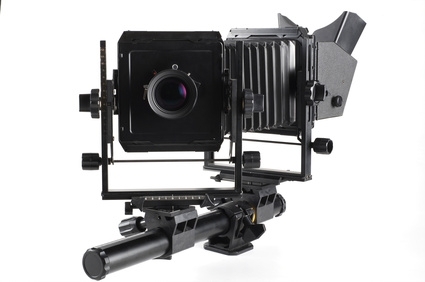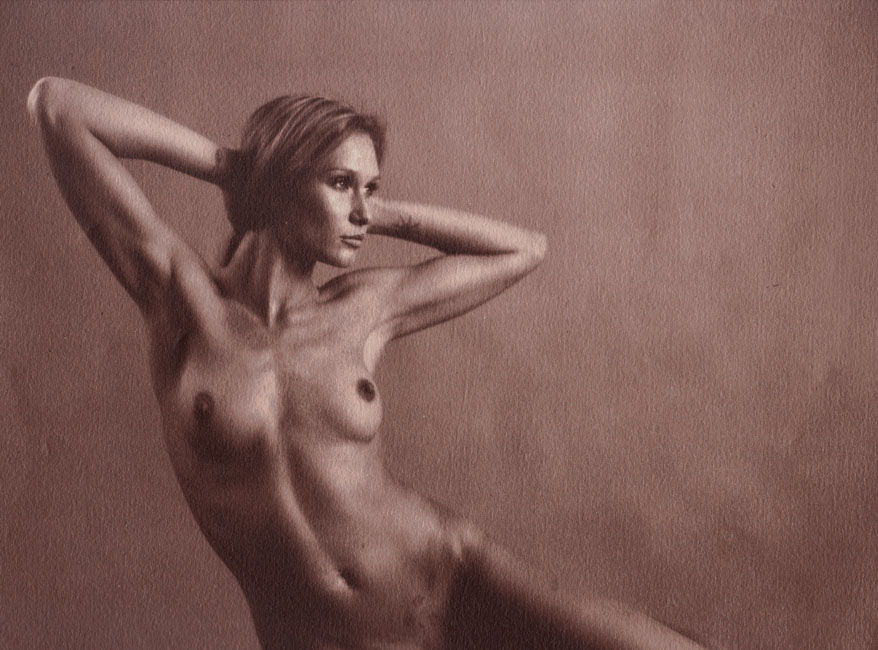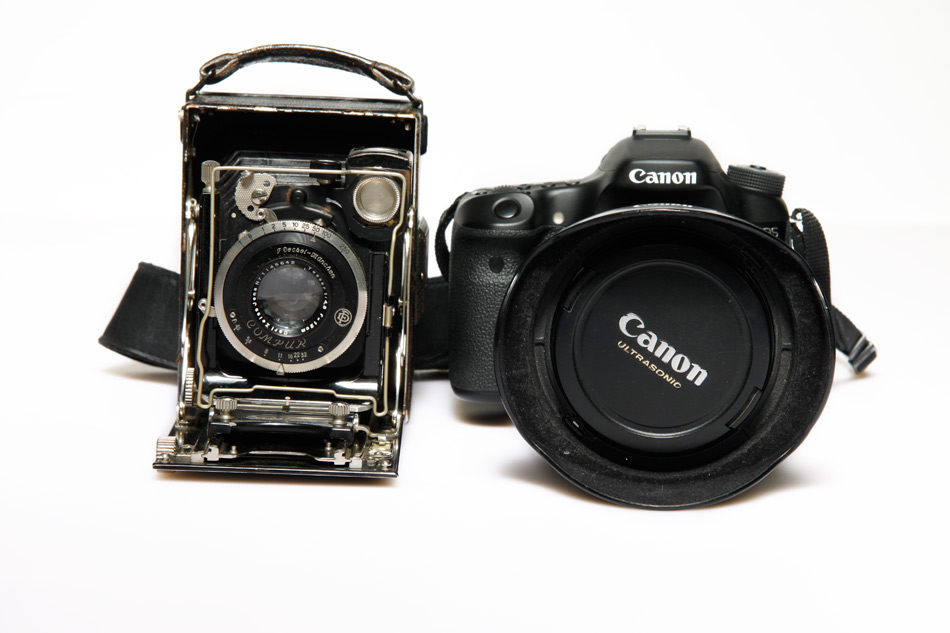
This small view camera, negative size 6×9 cm is actually much smaller than an SLR. Photo by Małgorzata Bardoń.
View cameras are large, heavy and unwieldy
As with most of myths, there is a grain of truth in this one. Some view cameras are indeed heavy, big and unwieldy. It is enough to take a look at typical studio cameras such as the Globica, Deardof or old Zeiss cameras or at any ultra large format camera (say 24×24 inch) and we will see objects of considerable size and very limited mobility. The misunderstanding comes from an unjustified generalisation; not all view cameras are like that.
For the sake of explanation; view cameras can, broadly speaking, be divided into field and studio cameras. The first type are usually quite compact, designed so as to be folded in a handy cube for transport and can usually be carried in a regular backpack. Also their weight is rather limited most of the time. Things do look different in the case of studio cameras, which were not meant to be used on the go or even moved between studios too frequently. In this case the designers could focus on stability, sturdiness and maximum photographic potential at the expense of mobility and handiness.

Studio cameras like this Globica are the most likely source of the generalization concerning the size and unwieldiness of view cameras.
The next issue is the size of film a given camera uses. It is obvious that even a field camera of the 12×16 inch size will be rather largish; after all it has to contain ground glass of this size and allow for a similar film holder to be inserted. On the other hand, most cameras are much smaller and the most popular size seems to be 4×5 inch. The smallest view cameras will easily fit in the pocket of your camera bag, jacket or even jeans.
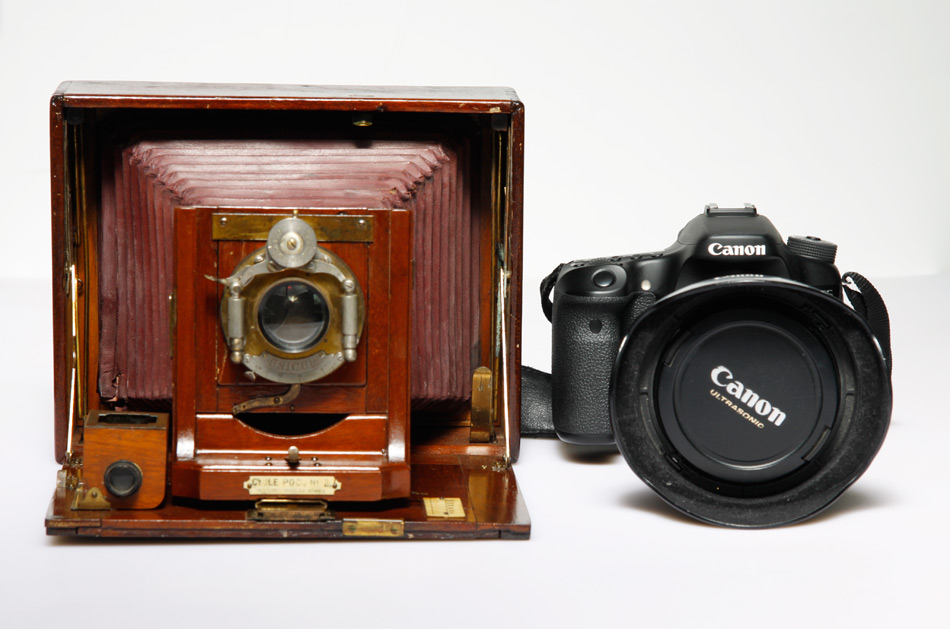
Even a camera of moderate size, 5×7 inch in this case, needs not be much larger than an SLR; when folded it won’t take more space than an SLR with a lens. Photo by Małgorzata Bardoń.
A view camera is hard to shoot with
Again, there is a grain of truth in this statement. First of all, we are using the most manual of all cameras, with absolutely no electronics to assist us. Secondly, we are talking of a camera with a flexible body which offers much more than a simple SLR. The multitude of things that can be done with such a camera will usually intimidate beginners. Needless to say, a camera like this won’t be an easy tool in, say, press photography (thought we should bear in mind that much of American press photography up to 1960s was shot with view cameras). On the other hand, all view cameras are similar and if you learn to use one, you will be able to work with them all. The lack of electronics needs not be an obstacle either. Of course, there is no green mode, but a person who knows the basics of photography will at most require a short introduction – in all likelihood a much shorter one than required to master all the electronics in a typical digital SLR.
View cameras are very expensive
New view cameras, especially ones made to order or characterized by unusual size are very expensive. A price exceeding 5000 dollars (for a camera without a lense and holders) is nothing special and for a really large camera one can pay triple that sum. On the other hand, there is a large number of second hand cameras, in excellent shape and available at bargain prices. Many of them are no worse than the brand new ones. For instance, a second hand Sinar or Graflex, frequently with a lens or even holders can be had for significantly below a thousand dolars which is the price of an enthusiast level SLR with a kit lens. At the moment of writing of this text, a Mentor Studio is available, complete with a lens and holders, for 300 dolars; the price of an advanced compact camera. A Soviet made FKD can be bought for a similar sum of money, a miniature Zeiss (9x12cm) costs something like 80 dolars. Complete with three film holders.
It is good to remember at this point that view cameras, unlike much of the modern equipment, are made to last and a 30 year old one will most likely be in perfect shape.
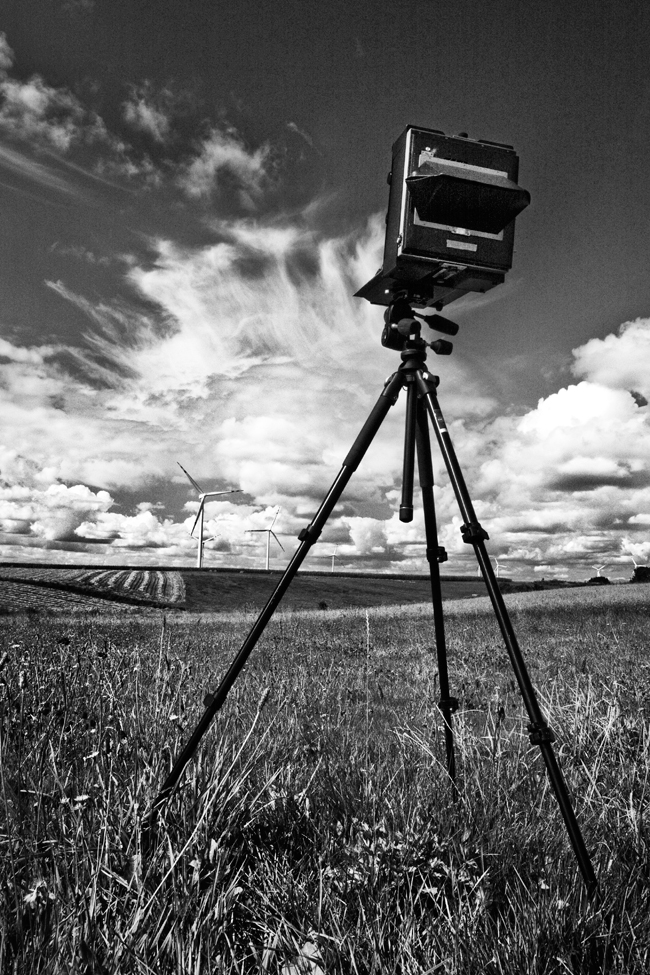
A Mentor Studio like this one is at the moment of writing available for 300 dollars. Complete with a lense and film holders. Photo by Małgorzata Bardoń.
Large format photography involves spending lots of money on materials
Once more, everything depends on our method of work, attitude and choice of materials. Sheet film, especially of the large sizes, is quite expensive and often needs to be custom cut. It is quite possible that one shot (with an ULF camera) will cost us something like 30 dollars. On the other hand, a 4×5 inch sheet of film is more like 60 cents to a dollar; not really that much. If that wasn’t enough, we don’t really have to buy photographic film. It can be substituted with X-ray film, photographic paper (which can be reverse developed to get unique positives), we can also shoot collodion or make our own glass plate negatives; these will not necessarily be cheaper, but will sure increase our satisfaction. Let’s compare the price of materials for an 8×10 inch (reasonably large) camera. While a film negative will cost at least close to three dollars per sheet, more if you choose the more expensive brands, the cost of paper will be round 30 cents and an X-ray film can be bought for 20 cents. One can hardly say this is expensive.
In the case of large format photography the same argument is frequently used as in the case of analogue photography in general; namely that shooting digital costs nothing once you have got the equipment and with analogue the costs sum up and even if one picture doesn’t cost much, the total sum is rather intimidating. On the other hand, you only pay for a digital camera once and then use it for free. It is, of course, true, though we pay for a digital camera much more and use it for a much shorter time than is the case with a view camera. A good digital SLR will cost two thousand dollars or more, the lenses, at least double that (at least being the key word). A complete second hand view camera with lens and holders can be purchased for 3-4 hundred dollars and a really fancy set; for a thousand. This means that our initial cost is lower by a few thousand dollars than is the case with digital photography. This sum will be enough to buy a lot of materials which. considering the way we normally take pictures with a view camera, will last us a very long time.
Large format photography has no commercial application
It is true that there are fewer and fewer commercial applications for large format photography as such, and the continued development of digital equipment will decrease this number even further. The times when a view camera could be called basic equipment for a professional photographer are gone and not likely to come back. On the other hand, cameras like that are still quite often used in advertising photography (even if they are used with digital backs), are an essential tool for many a landscape photographer making a living with their photos and I have seen more than one collodion shoot used commercially. The US government has recently been looking for a large format photographer offering a 100 000 dollars per year job. Still, one has to admit that commercial applications of view cameras are a niche rather than a rule.
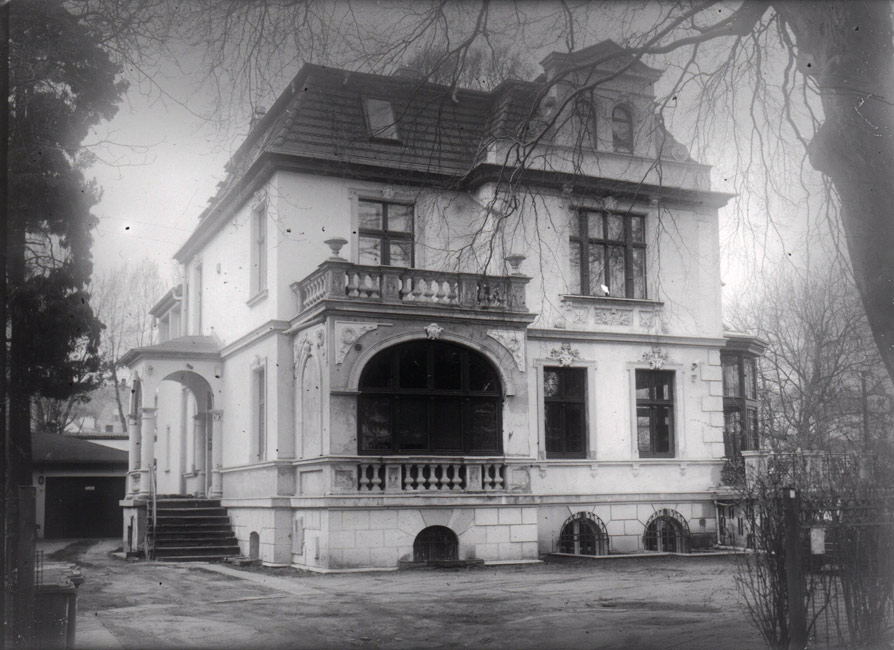
This shot owes its appearance to the fact a home made glass plate negative covered with colour blind emulsion was used. Photo by Radosław Brzozowski
Large format photography requires an elaborate darkroom
This is a very harmful generalization indeed. It is true that if we intend to enlarge large format negatives, we will need an appropriate, rather expensive enlarger and a darkroom that is large enough to house both the enlarger and the trays. If we choose to scan the negatives, not every scanner will do the job and we will need a really powerful computer (though, to be honest, even with the most powerful ones we will probably not be able to use the top resolution our scanner offers). On the other hand, if we opt for contact prints, all we need is a few trays, safelight, a sheet of glass and plywood which can hardly be called complex equipment.

